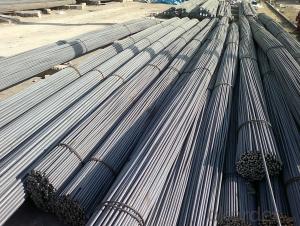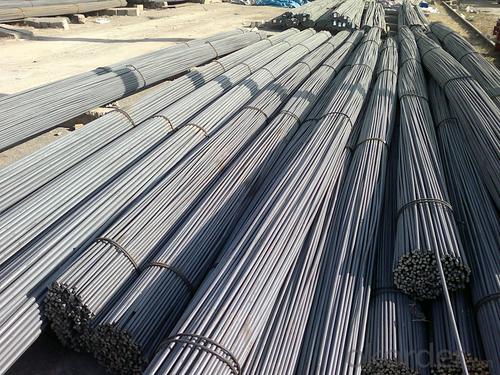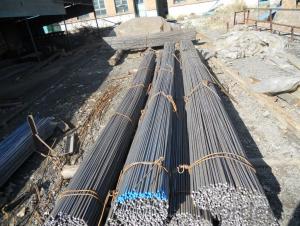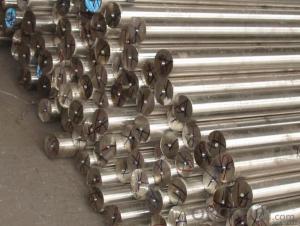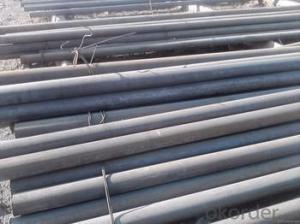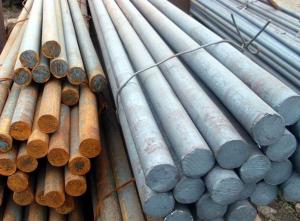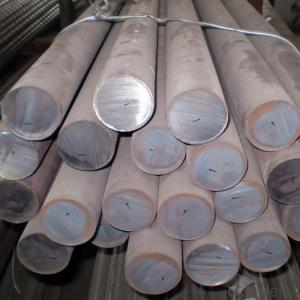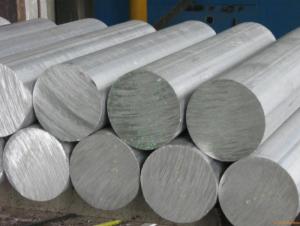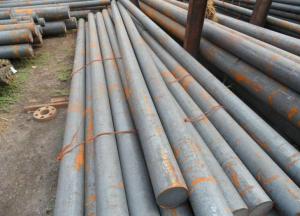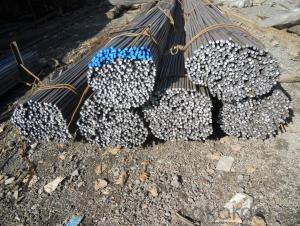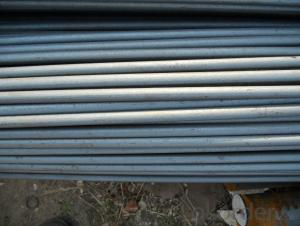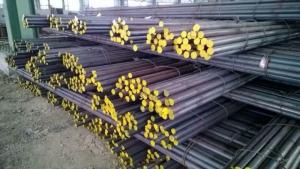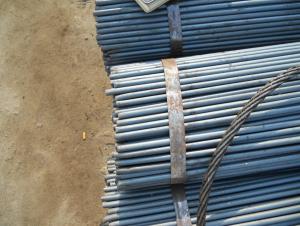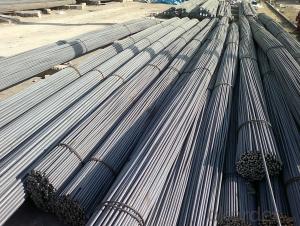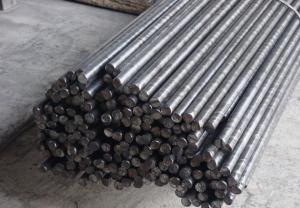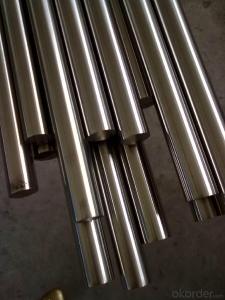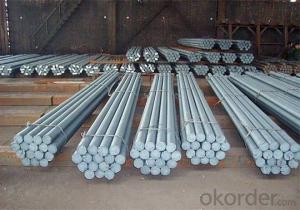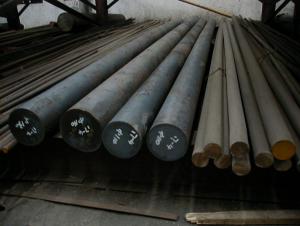hot rolled round bar
- Loading Port:
- China Main Port
- Payment Terms:
- TT OR LC
- Min Order Qty:
- -
- Supply Capability:
- -
OKorder Service Pledge
Quality Product, Order Online Tracking, Timely Delivery
OKorder Financial Service
Credit Rating, Credit Services, Credit Purchasing
You Might Also Like
Quick Details
| Steel Grade: | Standard: | Dimensions: | |||
| Place of Origin: | Brand Name: | Model Number: | |||
| Technique: | Application: | Alloy Or Not: | |||
| Special Use: | Type: | LENGTH: | |||
| COMMODITY: | SPEC: | SIZE: |
Packaging & Delivery
| Packaging Detail: | Packing Term: Bulk Packing Or Container. |
| Delivery Detail: | Within 30-45 days as of the date of contract signing |
Specifications
ROUND BAR (S45C,S20C,SS400,A36)
1.Length:6m to 12m
2.Grade:Q235/SS400/S20C/S45C
Remarks:
1.Origin / Manufacturer: China
2.Port of Loading: Tianjin Port,China
3.Packing Term: Bulk Packing Or Container
4.Measurement of Weight: By Theoretical Weighting
5.Certificate:ISO9001,CIC,BV,SGS
- Q: What are the different types of steel round bar surface finishes for improved aesthetics?
- There are several different types of steel round bar surface finishes that can be used to enhance the aesthetic appeal of the material. These finishes are often chosen based on the desired look and feel of the steel, as well as the intended application. Some of the most common surface finishes for steel round bars include: 1. Polished: This finish involves a series of abrasive processes that result in a smooth, reflective surface. It is commonly used in applications that require a high level of visual appeal, such as architectural structures or decorative pieces. 2. Brushed: This finish is achieved by brushing the steel surface with a wire brush or abrasive pad, creating a textured appearance. It provides a more subdued and contemporary look, and is often used in modern architectural designs or furniture. 3. Satin: This finish is similar to brushed, but with a finer texture. It creates a smooth and matte appearance, making it a popular choice for applications that require a sophisticated and elegant look, such as luxury fixtures or appliances. 4. Hammered: This finish involves creating a series of small dents or dimples on the surface of the steel, giving it a textured and rustic appearance. It is commonly used in applications that require a unique and artistic look, such as handrails or decorative accents. 5. Etched: This finish is achieved by chemically treating the steel surface to create a pattern or design. It allows for intricate and detailed designs, making it a popular choice for applications that require personalized or branded elements, such as signage or logos. 6. Powder-coated: This finish involves applying a layer of powdered paint to the steel surface and then baking it to create a durable and vibrant coating. It provides a wide range of color options and is often used in applications that require a decorative and long-lasting finish, such as outdoor furniture or architectural elements. Overall, the choice of steel round bar surface finish depends on the desired aesthetic outcome and the specific requirements of the application. Different finishes can enhance the visual appeal of the steel, making it suitable for various industries and design purposes.
- Q: Can steel round bars be used for making pressure vessels?
- No, steel round bars are not typically used for making pressure vessels. Pressure vessels require materials with specific properties such as high strength, good weldability, and resistance to corrosion. While steel round bars can provide strength, they may not fulfill all the necessary criteria. Pressure vessels are usually made from specialized materials such as carbon steel plates or stainless steel sheets that meet the required standards and certifications. These materials are specifically chosen for their ability to withstand the high pressures and temperatures that pressure vessels are subjected to.
- Q: How are steel round bars stored and transported?
- Steel round bars are typically stored and transported using a variety of methods to ensure their safety and ease of handling. When it comes to storage, steel round bars are often stored in warehouses or outdoor yards. In these facilities, the bars are usually stacked horizontally on racks or placed on steel stands to prevent any damages or deformations. It is important to keep the bars off the ground to avoid contact with moisture and potential rusting. To facilitate transportation, steel round bars are commonly bundled together using steel straps or chains. These bundles are designed to keep the bars tightly secured and prevent any movement during transit. Additionally, the bundles are often labeled with relevant information such as the type of steel, dimensions, and weight to ensure proper identification and handling. When it comes to transportation, steel round bars can be shipped using various modes such as trucks, trains, or ships. Trucks and trains are commonly used for shorter distances, while ships are preferred for longer hauls, especially for international shipments. Depending on the size and weight of the bars, they can be loaded onto flatbed trucks or placed in shipping containers for transportation. During transportation, it is crucial to avoid any potential impacts or mishandling that could cause damage to the bars. Proper securing and bracing techniques are employed to minimize any movement or shifting of the bars in transit. This can include using blocking and bracing materials to prevent the bars from rolling or sliding. In summary, steel round bars are stored in warehouses or outdoor yards and are often bundled together using steel straps or chains. They are transported using trucks, trains, or ships, ensuring proper securing and bracing to prevent damage. By following these storage and transportation practices, steel round bars can be delivered to their destinations safely and efficiently.
- Q: Can steel round bars be used in the hospitality industry?
- Yes, steel round bars can be used in the hospitality industry. Steel round bars are versatile and durable, making them suitable for various applications within the industry. They can be used for constructing furniture, such as chairs, tables, and bar stools, as well as for creating decorative elements like railings, light fixtures, and signage. Steel round bars also provide excellent strength and stability, ensuring the safety of guests and staff. Moreover, they can be easily customized to match the desired aesthetic and design preferences of different hospitality establishments. Overall, steel round bars are a reliable and practical choice for the hospitality industry due to their durability, versatility, and aesthetic appeal.
- Q: How do you determine the appropriate steel grade for a specific application?
- Determining the appropriate steel grade for a specific application requires a comprehensive understanding of the application's requirements and the properties of different steel grades. Here are some key steps to consider: 1. Identify the application requirements: Start by clearly defining the specific application's requirements such as load-bearing capacity, corrosion resistance, temperature resistance, and durability. Consider factors such as the environment the steel will be exposed to, the expected stress levels, and any specialized characteristics needed. 2. Research steel grades: Once the application requirements are understood, research various steel grades available in the market. Identify steel grades that are known for possessing the desired properties required for the specific application. Consult industry standards, expert opinions, and available resources to gain insights into different steel grades and their performance in similar applications. 3. Evaluate material properties: Analyze the physical, mechanical, and chemical properties of the steel grades under consideration. Key properties to assess include strength, ductility, toughness, hardness, corrosion resistance, weldability, and formability. Compare these properties with the application requirements to determine which steel grades align best with the specific needs. 4. Consider cost and availability: Evaluate the cost and availability of the steel grades that meet the application requirements. Factors such as the initial cost, maintenance costs, and availability of the steel grade in the required form and quantity should be taken into account. This step ensures that the chosen steel grade is not only suitable but also feasible from an economic perspective. 5. Seek expert advice: Consulting with experts, such as metallurgists or engineers, can provide valuable insights into selecting the appropriate steel grade. Their expertise and experience can help weigh the pros and cons of different steel grades, identify potential challenges, and suggest alternatives or modifications if necessary. 6. Conduct testing and trials: If feasible, conduct testing or trials using samples of the selected steel grade to assess its performance under real-world conditions. This step can help validate the suitability of the chosen steel grade and identify any unforeseen issues or areas for improvement. By carefully considering the application requirements, researching steel grades, evaluating material properties, considering cost and availability, seeking expert advice, and conducting testing and trials, one can effectively determine the appropriate steel grade for a specific application.
- Q: Are steel round bars susceptible to rust?
- Yes, steel round bars are susceptible to rust if they are not properly protected or coated.
- Q: Are steel round bars suitable for use in the mining industry?
- Yes, steel round bars are suitable for use in the mining industry. Steel round bars are known for their strength and durability, making them ideal for use in the mining industry where heavy-duty equipment and machinery are utilized. These bars can be used for various applications such as shafts, support beams, and structural components in underground mines, open-pit mines, and processing plants. Steel round bars are capable of withstanding high loads and pressures, making them suitable for harsh mining environments. They have excellent tensile strength and can withstand extreme temperatures, making them resistant to wear, abrasion, and impact. This is crucial in mining operations where equipment is subjected to heavy loads, vibrations, and constant movement. Moreover, steel round bars can be easily welded, fabricated, and machined according to specific requirements, making them versatile and adaptable to a wide range of mining applications. They can be customized to different sizes, lengths, and shapes, ensuring a perfect fit for various mining equipment and structures. In addition to their strength and versatility, steel round bars also offer cost-effectiveness and long-term value. They have a long lifespan, require minimal maintenance, and can withstand the harsh conditions typically found in mining operations, reducing the need for frequent replacements or repairs. Overall, steel round bars are a reliable and suitable choice for the mining industry due to their strength, durability, versatility, and cost-effectiveness. They provide the necessary support and structural integrity required for mining operations, ensuring the safety and efficiency of the industry.
- Q: What are the different types of steel round bar finishes?
- There are several different types of steel round bar finishes available, each with its own unique properties and benefits. Some common types of steel round bar finishes include: 1. Hot Rolled: This finish is achieved by heating the steel to a high temperature and then rolling it while it is still hot. Hot rolled steel round bars have a rough surface and a blue-grey color. This finish is commonly used for structural applications where aesthetics are not a priority. 2. Cold Rolled: In contrast to hot rolled steel, cold rolled steel round bars are processed at room temperature. This results in a smoother surface and tighter dimensional tolerances. Cold rolled steel round bars are often used in applications that require a more polished look or where precise measurements are essential. 3. Turned and Polished: This finish involves removing the outer layer of the steel round bar through a process called turning. After turning, the bar is polished to achieve a smooth and shiny surface. Turned and polished steel round bars are commonly used in decorative applications or where a high-quality appearance is desired. 4. Ground: Ground steel round bars undergo a grinding process to remove imperfections and achieve a smooth, uniform surface. This finish is often used when tight tolerances and precise measurements are required, such as in machine parts or tools. 5. Chrome Plated: Chrome plating involves applying a layer of chromium onto the surface of the steel round bar. This finish provides enhanced corrosion resistance and a lustrous appearance. Chrome plated steel round bars are frequently used in applications where the material will be exposed to moisture or harsh environments. 6. Galvanized: Galvanizing is the process of coating steel with a layer of zinc to protect it from corrosion. Galvanized steel round bars have a characteristic silver appearance and are commonly used in outdoor applications or environments where rust is a concern. These are just a few examples of the different types of steel round bar finishes available. The choice of finish will depend on the specific requirements of the application, such as aesthetics, corrosion resistance, or dimensional tolerances.
- Q: Why is round steel more expensive than thread steel?
- Threaded steel should be used in the construction field, there are generally two, three grade steel, grade HRB335, HRB400 also has four grades, HRB500 thread steel. Steel is divided by tolerance standard of gb. You say there is no comparable price between round bar and screw thread
- Q: What are the factors to consider when selecting a steel round bar for a specific application?
- When selecting a steel round bar for a specific application, there are several important factors to consider. 1. Material Grade: The first factor to consider is the material grade of the steel round bar. Different grades of steel have varying properties, such as strength, hardness, and corrosion resistance. It is crucial to choose a material grade that is suitable for the specific application's requirements. 2. Mechanical Properties: The mechanical properties of the steel round bar, such as tensile strength, yield strength, and elongation, need to be evaluated. These properties determine the bar's ability to withstand forces and deformations under load. The selected steel round bar should have mechanical properties that match the demands of the application. 3. Size and Dimensions: The size and dimensions of the steel round bar are crucial considerations. This includes the diameter, length, and tolerance requirements. The dimensions should be chosen based on the application's structural requirements and the intended load-bearing capacity of the bar. 4. Surface Finish: The surface finish of the steel round bar is significant, especially for applications involving aesthetics or contact with other components. Considerations such as smoothness, roughness, and the presence of any coatings or treatments should be taken into account. 5. Corrosion Resistance: Depending on the application's environment, it is essential to select a steel round bar with adequate corrosion resistance. Factors such as exposure to moisture, chemicals, or extreme temperatures can affect the bar's longevity and performance. Stainless steel or corrosion-resistant coatings can be chosen to enhance the bar's resistance to corrosion. 6. Machinability: If the steel round bar needs to be machined or fabricated into a specific shape, its machinability must be considered. Some steel grades are easier to machine, while others may require more advanced tools or techniques. The machinability of the selected bar should align with the desired manufacturing processes. 7. Cost: Finally, the cost of the steel round bar should be considered. Different material grades and specifications come with varying price points. It is important to balance the required properties and performance with the project's budget constraints. Overall, selecting a steel round bar for a specific application requires careful evaluation of the material grade, mechanical properties, size, surface finish, corrosion resistance, machinability, and cost. By considering these factors, one can ensure that the chosen steel round bar will meet the application's requirements and deliver optimal performance.
Send your message to us
hot rolled round bar
- Loading Port:
- China Main Port
- Payment Terms:
- TT OR LC
- Min Order Qty:
- -
- Supply Capability:
- -
OKorder Service Pledge
Quality Product, Order Online Tracking, Timely Delivery
OKorder Financial Service
Credit Rating, Credit Services, Credit Purchasing
Similar products
Hot products
Hot Searches
Related keywords
